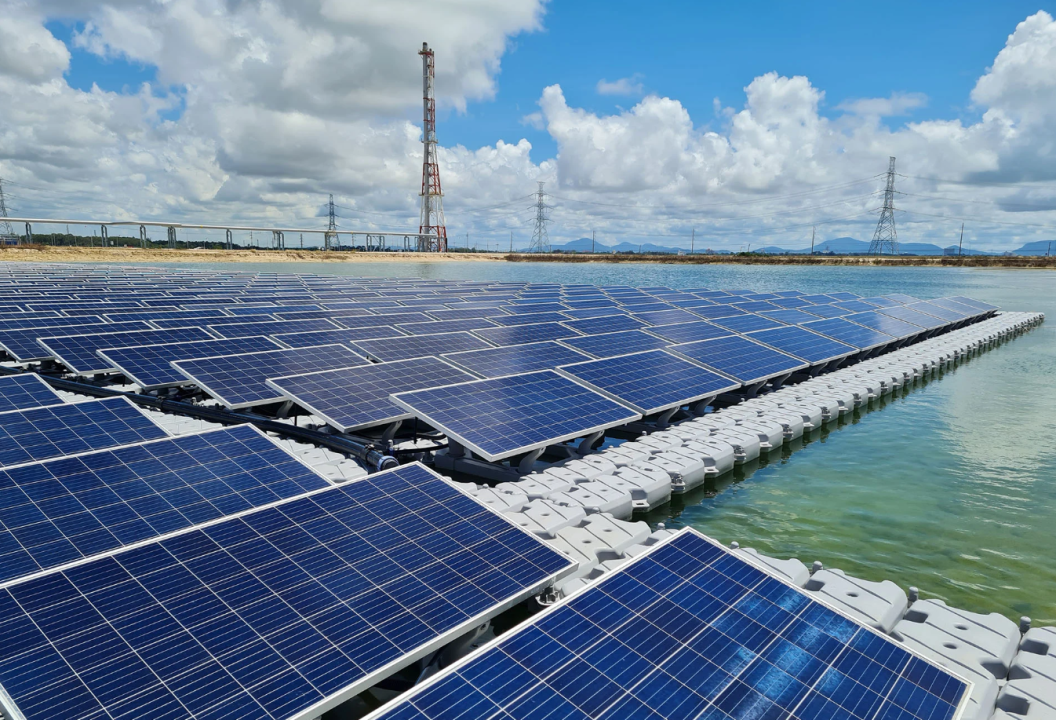Floating solar farms are one of the ways through which solar energy is gaining popularity. Utilizing solar farms is an alternative to lakes and reservoirs, where the solar farms are placed on water. They have wonderful expectations of clean energy, and they also promise to address some issues. This article will explore why floating solar farms are an excellent option and the challenges they encounter.
Floating Solar Farms: What Are They?
Floating solar farms can be defined as companies of solar panels mounted on floating platforms on water. They occupy water surfaces instead of attempting to break into the land or open land space. It is possible on the lakes, dams, and even on large ponds. These are solar panels that absorb the sun and convert it into electricity. This concept conserves space on land and utilizes the waters that are not utilized in other ways.
Prospects of Floating Solar Farms
- Saving Land for Other Uses
A major expectation about floating solar farms is that these farms do not occupy land. It can be utilized in the form of farming, building, or parks. The land is left free because the solar panels are positioned in water. This is quite significant in congested places where land is scarce.
- Better Energy Production
Floating solar panels usually perform better than those on land. Water aids in putting out the fire of panels. Solar panels have a tendency to generate less electricity when it’s too hot. The water-cooling effect is more efficient on the panels. Other researches state that floating panels have the capacity to produce up to 15 percent more electricity compared to ground panels.
- Keeping Water Safe and Saving It
When there are solar panels, the solar panels will not reach the water. This is to prevent the proliferation of algae, which may negatively affect the quality of water. Furthermore, the panels decrease evaporation and hence less water would be lost to the atmosphere. This would go a long way in the dry regions where water conservation is highly valued.
- Adapting to Water Changes
The panels are floatable, meaning that they rise and fall as the level of water rises and falls. This would ensure that they are not easily destroyed by heavy rains and floods. The system remains secure and performs over a long period of time.
- Support from Governments
Most countries are now interested in utilizing more clean energy, such as solar. They provide assistance to floating solar works, either in monetary or regulatory forms, to facilitate the construction. The floating solar farms are a favorable option in the future because of this support.
Challenges of Floating Solar Farms
- Cost of Installation
Putting solar panels on water is more expensive than on land. The platforms need to be strong and safe to float. Also, special equipment is needed to keep the panels stable and connected to the electricity system. These extra costs can make the project harder to start.
- Water and Weather Risks
Water in lakes or ponds can be rough. Strong winds or waves can move or damage the solar panels. Cold weather in some places can cause ice, which may harm the floating system. Designers must work hard to make sure the farms can handle these problems.
- Environmental Concerns
Covering water with solar panels may affect fish and plants that live there. It can change the temperature or light that reaches underwater. Careful study and planning are needed to protect the water life when building floating solar farms.
- Maintenance and Repairs
It is harder to fix or clean solar panels on water than on land. Workers need boats and special tools. If parts break or get dirty, it may take longer and cost more to repair them.
- Limited Suitable Locations
Not all bodies of water can be used for floating solar. The water must be calm and not too deep. Also, it is better if the water is close to where electricity is needed. Finding the right place takes time and study.
Conclusion
Floating solar farms offer a promising way to make more solar power by using water surfaces. They save land, produce more electricity, and help save water. At the same time, challenges like high costs, weather risks, and environmental effects need attention.

